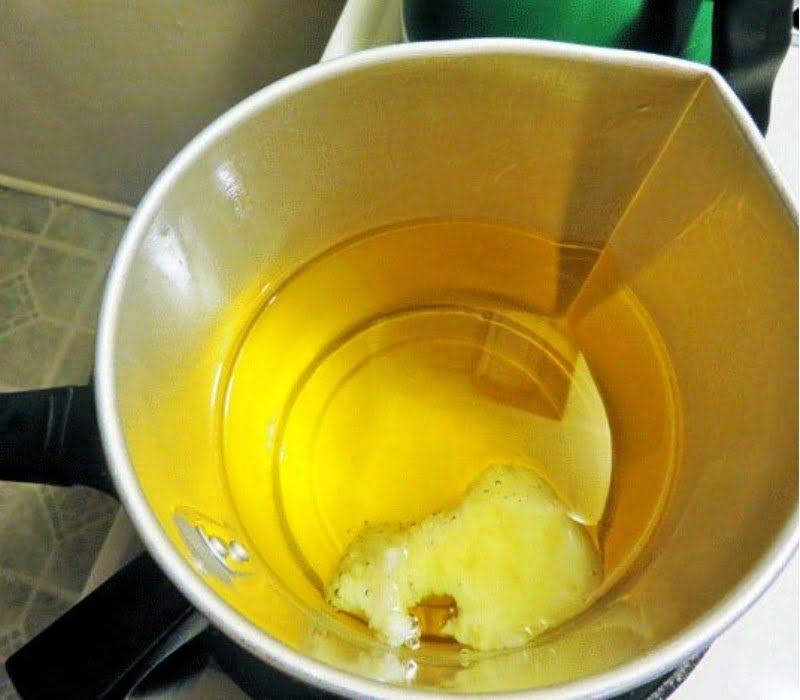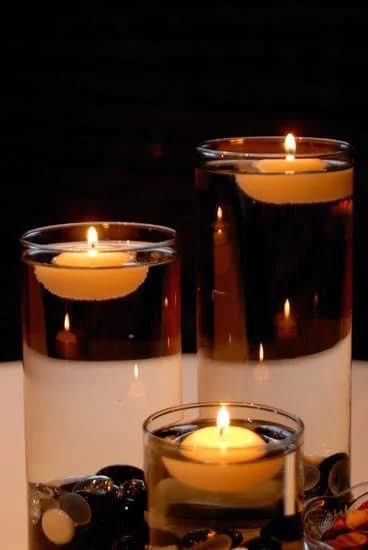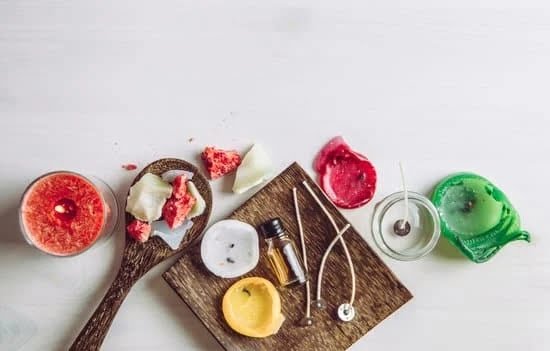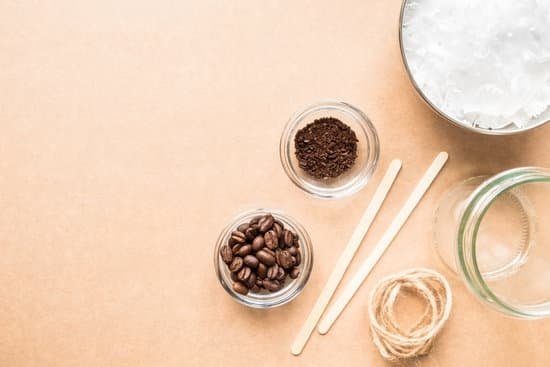Are you interested in creating your own custom scented candles? Look no further. In this article, we will explore the world of easy candle making with essential oils. Essential oils not only add delightful fragrances to your candles but also provide various wellness benefits through aromatherapy. From choosing the right materials to exploring different essential oil combinations, we’ve got you covered with all the information you need to get started on your candle making journey.
Candle making with essential oils offers a wide range of benefits and versatility that traditional fragrance oils simply cannot match. Not only do essential oils provide captivating scents, but they also bring therapeutic properties that can enhance your overall well-being.
With our comprehensive guide, you’ll learn how to select the appropriate wax, wicks, and essential oils for your specific candle making project. Additionally, we’ll delve into the importance of using essential oils safely and avoiding common mistakes to ensure a successful and enjoyable candle making experience.
If you’re new to the world of candle making or just looking for some expert advice, we’ve got you covered with a step-by-step candle making process. Our detailed instructions will walk you through everything from melting the wax to adding the perfect amount of fragrance using essential oils.
We’ll even discuss different essential oil combinations, so you can discover unique and harmonious blends for creating custom scented candles that suit your personal preferences. So, whether you’re a seasoned crafter or a beginner looking for a new hobby, let’s dive into the wonderful world of candle making with essential oils.
Choosing the Right Materials
When it comes to creating your own candles with essential oils, choosing the right materials is crucial for a successful and fulfilling project. Here is a comprehensive guide to help you select the appropriate wax, wicks, and essential oils for your candle making endeavor:
- Wax: There are various types of wax available for candle making, including soy wax, beeswax, paraffin wax, and coconut wax. Each type of wax has its own unique qualities and characteristics, so it’s important to consider factors such as burn time, scent throw, and eco-friendliness when choosing the right wax for your candles.
- Wicks: Selecting the proper wick is essential for optimal candle performance. The size and material of the wick will determine how evenly and cleanly the candle burns. Be sure to consider the diameter of your container when choosing a wick size.
- Essential Oils: When it comes to adding fragrance to your candles, essential oils offer a natural and aromatic option. It’s important to choose high-quality essential oils that are safe for use in candles. Consider experimenting with different scents and blends to create unique aromas for your homemade candles.
With these tips in mind, you can confidently select the best materials for your easy candle making with essential oils project. Whether you prefer all-natural soy wax or the traditional look of beeswax, there are endless possibilities for creating beautifully scented candles that reflect your personal style and preferences.
Essential Oil Safety
When it comes to making candles with essential oils, safety should be a top priority. Essential oils are highly concentrated plant extracts and should be handled with care to avoid any potential hazards. Understanding the importance of using essential oils safely in candle making is crucial for a successful and enjoyable crafting experience.
Essential Oil Safety Guidelines
Before beginning your easy candle making with essential oils, it’s important to familiarize yourself with essential oil safety guidelines. Always handle essential oils in a well-ventilated area and use gloves when handling undiluted oils to prevent skin irritation. Additionally, be mindful of any potential allergies or sensitivities among those who may come into contact with the candles.
Avoiding Common Mistakes
Incorporating essential oils into your candle making process requires attentiveness to avoid common mistakes. One common mistake is using too much essential oil, which can lead to an overpowering scent or cause the candle to burn inconsistently.
It’s important to follow recommended usage rates and carefully measure the amount of essential oil added to the wax. Another mistake to avoid is using low-quality or synthetic essential oils, as these may not provide the desired aromatherapy benefits and can compromise the quality of the candle.
Safe Use of Essential Oils Around Pets and Children
When using essential oils in candles, it’s crucial to consider the safety of pets and children. Some essential oils can be toxic to animals, so it’s important to research specific oils that may pose a risk and keep candles out of reach. When incorporating essential oil candles into your home decor, ensure that they are placed in areas inaccessible to pets and children to prevent accidental ingestion or exposure.
By understanding and following essential oil safety precautions, you can enjoy the benefits of easy candle making with essential oils while ensuring a safe crafting experience for yourself and those around you.
Step-by-Step Candle Making Process
Once you have gathered all the necessary materials for your candle making project, it’s time to dive into the step-by-step process of creating your very own custom scented candles using essential oils. The first important step is melting the wax.
You can choose from a variety of waxes, including soy wax, beeswax, or paraffin wax, depending on your preference and the type of candle you want to make. Using a double boiler or a dedicated wax melter, heat the wax to its recommended melting point, stirring occasionally to ensure even melting.
Once the wax has melted completely and reached the desired temperature, it’s time to add the essential oils. This is where you can get creative and customize the scent of your candle to your liking.
Whether you prefer calming lavender, uplifting citrus, or warm vanilla, essential oils offer endless possibilities for creating unique fragrance combinations for your candles. Remember to follow recommended guidelines for dilution and usage rates when adding essential oils to your melted wax to achieve a balanced and pleasing scent without overpowering the room.
After carefully mixing in the essential oils, it’s time to pour the scented wax into your chosen candle container or mold. Whether you’re using mason jars, tea cups, or silicone molds, ensure that they are clean and dry before pouring in the wax. As an extra touch, consider adding dried flowers, herbs, or botanicals to enhance the visual appeal of your homemade candles.
Finally, carefully insert the wick into the center of the candle while ensuring that it stays upright as the wax solidifies. Allow your candles to cool and harden completely before trimming the wick and enjoying your beautifully fragrant creation.
As with any craft project involving essential oils, it’s important to handle them with care and respect their potency. Always use caution when handling undiluted essential oils and be mindful of any specific safety recommendations for individual oils to ensure a safe and enjoyable candle making experience.
By following these detailed instructions for easy candle making with essential oils from start to finish, you can create personalized candles that not only fill your home with delightful aromas but also provide wellness benefits through aromatherapy.
Exploring Different Essential Oil Combinations
When it comes to creating custom scented candles, the possibilities are endless when using essential oils. With a wide range of scents available, you can mix and match various essential oils to create unique and harmonious blends that will fill your space with delightful aromas. Whether you’re looking to create a relaxing atmosphere or invigorate your senses, experimenting with different essential oil combinations can be both fun and rewarding.
Understanding Scent Profiles
Before diving into creating your custom scented candles, it’s important to understand the scent profiles of different essential oils. Some oils have floral notes, while others may have earthy or citrusy undertones. By familiarizing yourself with the various scent families, you can better envision how different essential oils might work together in a blend. For example, combining lavender and bergamot creates a soothing and uplifting combination perfect for unwinding after a long day.
Experimenting With Blending Ratios
Once you have an understanding of the individual scents of the essential oils you plan to use, it’s time to start experimenting with blending ratios. Start by creating small test batches of candles using different combinations of essential oils to see how they interact with each other.
Keep track of your ratios and take note of the aroma strength and balance of each blend. This trial-and-error process will help you find the perfect combination for your custom scented candles.
Capturing Seasons and Moods
One of the exciting aspects of exploring different essential oil combinations is capturing specific seasons or moods through your candle creations. For example, blending cinnamon, clove, and orange essential oils evokes warmth and coziness perfect for fall and winter months. On the other hand, combining lemongrass and eucalyptus creates a refreshing blend ideal for spring and summer. By playing around with seasonal and mood-based combinations, you can personalize your candle making experience even further.
Tips for Successful Candle Making
When embarking on the journey of easy candle making with essential oils, it’s important to be equipped with the right knowledge and tools to ensure success. Even with careful planning and execution, common issues may arise during the candle making process. However, there are expert tips and advice that can help troubleshoot these issues and lead to the creation of the perfect candles every time.
One common issue in candle making is tunneling, which occurs when a hole forms down the center of the candle, leaving excess wax around the edges. To prevent this, it’s essential to choose the right wick size for the diameter of your candle. Using a wick that is too small can cause tunneling, while a wick that is too large can lead to excessive sooting. Additionally, properly centering the wick during the cooling process can help prevent tunneling.
Another issue that candle makers often encounter is poor scent throw, where the fragrance of the essential oils is not effectively dispersed when the candle is lit. This can be caused by using an inadequate amount of fragrance oil or using essential oils with low flash points that burn off too quickly. To achieve a strong scent throw, it’s important to carefully measure and add the appropriate amount of essential oils to your wax based on its volume.
Furthermore, achieving a smooth and blemish-free surface on homemade candles can be challenging. To address this issue, ensuring that your workspace is clean and free from dust or debris is crucial. Additionally, pouring your wax at the correct temperature and avoiding sudden fluctuations in temperature during cooling can help achieve a flawless finish on your candles.
These expert tips for successful candle making are essential for troubleshooting common issues encountered during the process. By understanding how to address these issues and implementing best practices in easy candle making with essential oils, you can consistently produce high-quality candles with delightful fragrances.
| Common Issue | Expert Tip |
|---|---|
| Tunneling | Choose the right wick size for your candle diameter |
| Poor Scent Throw | Carefully measure and add appropriate amount of essential oils |
| Blemishes on Candle Surface | Pour wax at correct temperature & keep workspace clean |
Benefits of Using Essential Oils in Candles
Candles have been used for centuries to create a warm and inviting atmosphere, but when combined with essential oils, they can also provide numerous aromatherapy and wellness benefits. When using essential oils in candle making, it’s important to understand the unique advantages they offer for your well-being.
One of the primary benefits of using essential oils in candles is their ability to promote relaxation and stress relief. For example, lavender essential oil is well-known for its calming properties, making it an excellent choice for creating candles that can help you unwind after a long day. Similarly, citrus essential oils like lemon or orange can uplift your mood and provide a refreshing scent to brighten up any room.
In addition to their aromatic qualities, many essential oils also have potential health benefits when used in candles. Some essential oils possess antibacterial, antifungal, and anti-inflammatory properties that can help purify the air and support overall wellness. For instance, eucalyptus essential oil has been traditionally used to ease respiratory issues and clear congestion, making it a valuable addition to homemade candles during cold and flu season.
Furthermore, incorporating essential oils into homemade candles allows you to customize the scents based on individual preferences and specific needs. By exploring different essential oil combinations, you can create personalized blends that cater to your unique aromatherapy goals and enhance your overall well-being.
| Benefits of Using Essential Oils in Candles | Aromatherapy & Wellness Benefits |
|---|---|
| Promotes relaxation and stress relief | Lavender essential oil is known for its calming properties |
| Potential health benefits when used in candles | Eucalyptus oil supports respiratory health |
| Customization of scents based on preferences | Create personalized blends for specific aromatherapy goals |
Creative Candle Making Ideas
In conclusion, incorporating essential oils into your candle making projects can add a multitude of benefits and enhance the overall experience of creating custom candles. Not only do essential oils offer unique and pleasing fragrances, but they also bring potential aromatherapy and wellness benefits to the table. By carefully selecting the right materials and following essential oil safety guidelines, you can easily create beautiful and aromatic candles that are both safe and effective.
Exploring different essential oil combinations opens up a world of possibilities for creating custom scented candles that cater to your specific preferences. Whether you’re interested in creating calming blends for relaxation or invigorating fragrances for an energy boost, the options are endless. Additionally, learning about various candle making techniques such as layering, marbling, and custom molds can help elevate your creations to new levels of uniqueness and creativity.
Overall, easy candle making with essential oils not only offers a fun and rewarding hobby but also allows you to personalize your living space with delightful scents that contribute to a cozy atmosphere. The benefits of using essential oils in candles extend beyond just creating pleasant aromas, making it a worthwhile endeavor for anyone interested in artisanal crafts or exploring the world of natural fragrance.
So why not give it a try? With the proper materials, safety precautions, and creative inspiration, you can soon be enjoying the fruits of your labor as your home is enveloped in the comforting glow and soothing scents of your own handcrafted candles.

Welcome to my candle making blog! In this blog, I will be sharing my tips and tricks for making candles. I will also be sharing some of my favorite recipes.





